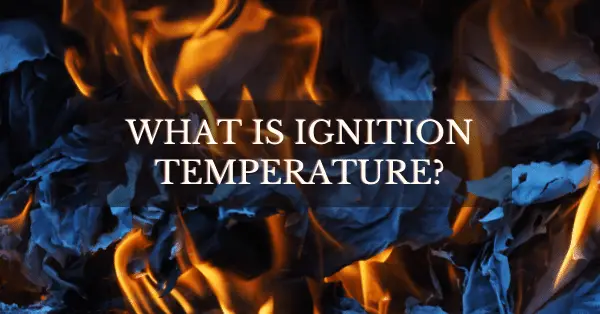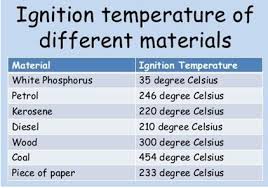This short article is going to be about ignition temperature which is the lowest temperature at which a substance catches fire. Before going any further let us first see why fire is important to us. We will also learn about why knowing this temperature for various substances is important to us.
TLDR;
The lowest temperature at which a substance catches fire is called ignition temperature
Ignition Temperature
Fire is a natural part of life. It has been around since the beginning of time. Fire is used for cooking food, heating homes, providing light, and even keeping us warm.
There are several ways to start a fire. Some people use matches, lighters, or flintstones. Others use friction, sparks, or heat. All these methods require different temperatures to ignite the fuel.
When it comes to starting a fire, the lowest temperature at which a substance catches fire is known as its ignition or flashpoint temperature. In other words, the lower the flashpoint, the easier it is to start a fire using that method.
The lowest temperature at which a substance catches fire
Flashpoint temperature is the lowest temperature at which a chemical compound will spontaneously ignite. A substance has this temperature if it ignites under normal conditions. For example, gasoline has a flashpoint temperature of around 100 degrees Celsius.
If a liquid is heated above its ignition temperature, it will start to burn. If a liquid is heated below its ignition temperature, it will not start to burn until it reaches a certain temperature.
For example, water has a flashpoint temperature of 100 degrees Celsius. Water boils at 212 degrees Celsius. Therefore, water cannot catch fire until it reaches 212 degrees Celsius.
Different substances have different temperatures for ignition. The table given below shows the ignition temperature of a few substances like paper, wood coal, etc.
It is measured in degrees Celsius or Fahrenheit as it has the unit of temperature.
Ignition temperature importance
- This temperature is critical in evaluating the safety criteria for low volatile substances including diesel oil, lubricating oil, and fuel oil.
- It is an important factor to consider when choosing a fuel source for your home heating system. A fuel source with a low ignition temperature will require less energy to heat your home.
- If you live in a warm climate, you want to choose a fuel source that has a high ignition temperature. You want to use a fuel source that requires more energy to ignite.
It is important to note here that this flashpoint is different from the auto-ignition temperature which is the lowest temperature at which a substance can spontaneously ignite.
Visit combustion and flame class 8 notes for some more general information about terms used in this article and visit our class 8 science page for other study material available. Learn more about this here in this article.
https://en.wikipedia.org/wiki/Flash_point
Test Your Knowledge
Given below is the set of questions related to this topic. Choose the correct answer out of the options provided and submit the quiz to get the result.


I am a regular visitor of this website, I am getting daily useful information.
[…] has a low ignition temperature. If gasoline is used in a diesel engine, it is likely to ignite prematurely due to high air […]